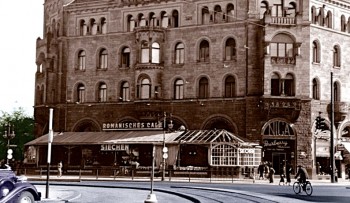“Of all the people I have chanced upon in life, there is no one who has left a greater impression. Months have passed but still Raif Efendi haunts my thoughts….Yet he was hardly an extraordinary man. In fact, he was rather ordinary with no distinguishing features…the sort of man who causes us to ask ourselves, ‘What does he live for? What does he find in life? What logic compels him to keep breathing? What philosophy drives him as he wanders the earth?’ ” – unnamed narrator.
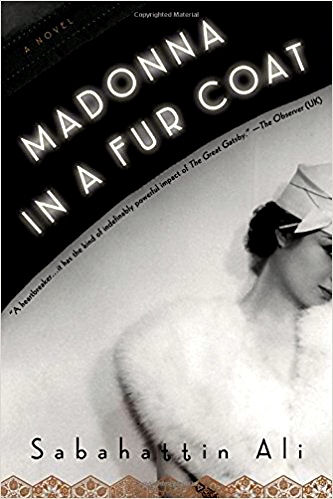 Born in the Ottoman Empire in 1907 in what is now Bulgaria, author Sabahattin Ali worked as a writer, poet, teacher, and journalist, and he served his country multiple times as a soldier, but he was also a man who believed that women had as much right to be leaders in life as men did, an idea at odds with the militaristic leaders of the Turkish Republic, which was formed in the aftermath of World War I. Writing in his own weekly newpaper, Sabahattin Ali was twice jailed for criticizing the country’s leaders, and mysteries still surround his death by gunshots at the border of Bulgaria and Turkey in 1948, though the nation’s security services are believed to have been responsible. His novel Madonna in a Fur Coat, published in 1943, remains an enduring legacy, reflecting many of his beliefs regarding the role of women within an unusual love story. A new 2013 edition of this book, seventy years after its original printing, has been “Turkey’s best-selling novel for the past three years,” according to the New York Journal of Books, this despite (or perhaps because of) current Turkish President Recep Tayyip Erdogan’s push to reestablish traditional gender roles within the country.
Born in the Ottoman Empire in 1907 in what is now Bulgaria, author Sabahattin Ali worked as a writer, poet, teacher, and journalist, and he served his country multiple times as a soldier, but he was also a man who believed that women had as much right to be leaders in life as men did, an idea at odds with the militaristic leaders of the Turkish Republic, which was formed in the aftermath of World War I. Writing in his own weekly newpaper, Sabahattin Ali was twice jailed for criticizing the country’s leaders, and mysteries still surround his death by gunshots at the border of Bulgaria and Turkey in 1948, though the nation’s security services are believed to have been responsible. His novel Madonna in a Fur Coat, published in 1943, remains an enduring legacy, reflecting many of his beliefs regarding the role of women within an unusual love story. A new 2013 edition of this book, seventy years after its original printing, has been “Turkey’s best-selling novel for the past three years,” according to the New York Journal of Books, this despite (or perhaps because of) current Turkish President Recep Tayyip Erdogan’s push to reestablish traditional gender roles within the country.
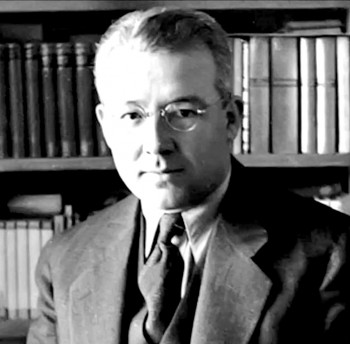 In 1941, the unnamed narrator of the novel, quoted at the beginning of the review, is asked by Raif Efendi, a man he has come to know from his employment, to go to his house to retrieve a notebook in which he wrote intimately about his life for ten years, now long past. The last passage in the journal, dated June 1933, conveys Efendi’s highly emotional state of mind: “I cannot go on with all this locked up inside me. There are so many things – that I need to say…but to whom? Can there be another soul wandering this great globe who is as lonely as I? Who would hear me out? Where would I begin?” Efendi’s eventual choice of this narrator to secure the notebook for him shows his absolute – and belated – trust in the narrator as a confidante since he feels that “all this locked up inside me” cannot be shared with his wife and daughter. The narrator is surprised by Efendi’s request: “It seemed impossible that a man like Raif Efendi…would willingly shrink away from those closest to him. [Perhaps] he did not wish those around him to know who he was.” As the narrator reads the journal from the beginning in 1923, he lets the journal tell the story, never interrupting Efendi’s entries as he shares intimacies which will forever change the life of the narrator.
In 1941, the unnamed narrator of the novel, quoted at the beginning of the review, is asked by Raif Efendi, a man he has come to know from his employment, to go to his house to retrieve a notebook in which he wrote intimately about his life for ten years, now long past. The last passage in the journal, dated June 1933, conveys Efendi’s highly emotional state of mind: “I cannot go on with all this locked up inside me. There are so many things – that I need to say…but to whom? Can there be another soul wandering this great globe who is as lonely as I? Who would hear me out? Where would I begin?” Efendi’s eventual choice of this narrator to secure the notebook for him shows his absolute – and belated – trust in the narrator as a confidante since he feels that “all this locked up inside me” cannot be shared with his wife and daughter. The narrator is surprised by Efendi’s request: “It seemed impossible that a man like Raif Efendi…would willingly shrink away from those closest to him. [Perhaps] he did not wish those around him to know who he was.” As the narrator reads the journal from the beginning in 1923, he lets the journal tell the story, never interrupting Efendi’s entries as he shares intimacies which will forever change the life of the narrator.
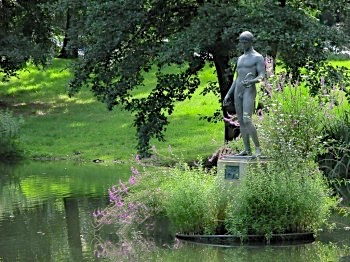
Berlin’s Tiergarten, to which Efendi escapes after an acquaintancce makes an obvious, unwanted advance towards him.
The action of Efendi’s journal takes place in Berlin, a city the author knew well from his two years of studying and teaching there. His main character Raif Efendi had studied briefly at the Istanbul Academy of Art but was never able to share his deepest feelings on canvas, essential for an artist. His father, hoping to give him a sense of direction, sent him off to Germany to study the soap business, in which the father had some interest. Now twenty-four, Raif, however, spends most of the year learning German instead, reading literature, attending art exhibitions, and getting to know some of the people at the pension where he lives. One exhibition of new expressionist artists, “made me want to laugh” because “these dreadful portraits looked like sketches of criminals.” As he glances toward the main room, however, a “torrent swept through me…I can only remember standing transfixed before a portrait of a woman wearing a fur coat…a face utterly new to me…[and] I couldn’t help but feel that I had known that woman since I’d opened my first book at age seven…since I’d started to dream.”
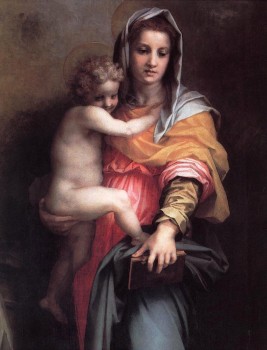
Andrea del Sarto’s Madonna delle Arpie, in which the Madonna looks almost identical to the painter Maria Puder.
The portrait is a self-portrait by a woman named Maria Puder, about which a local critic declared that the woman in the painting greatly resembled Andrea del Sarto’s Madonna delle Arpie, with its “expression of anguish and resentment.” Efendi particularly likes the fact that unlike the innocent, girlish madonnas seen so commonly in religious art, this Mary appears to be a woman who has learned how to think, someone who shuns the world to the point that she is not even looking up at the sky, preferring to keep her eyes on the ground. Innocent himself, Efendi spends hours staring at the portrait over the next few days, then unexpectedly sees the artist walking and follows her to a cabaret where she is performing. When she comes to his table, he is overwhelmed. Gradually, they begin to converse, but from the outset Maria warns him not to try to understand her. “There’s one thing you must remember. This all ends the moment you want something from me. …You [men] ask so much of us, as if it were your natural right.” She particularly resents the fact that “Men are the hunters, and we their miserable prey. And our duties? To bow down and obey and give them whatever they want.”
With the emotional roles between Raif and Maria reversed from the social norm, especially in the mid-1920s, the relationship features Raif as the naïf, certainly in the thrall of Maria, who, in turn, wants to keep everything on an intellectual level, even though her work requires her to flirt with the men who come to the cabaret. “The moment I see you pitying me is the moment I say goodbye,” she announces. They get closer as they come to know each other, and he falls completely in love while she still believes that “As different as you are, you are still a man.” Going to the famed Romanische Café, they eventually begin to communicate about what love is and is not, and Maria blames herself for not being able to love freely. Their unstable relationship changes still further as time passes.
As the reader knows from the outset, Raif keeps his journal for ten years, after which eight more years pass before he finds someone like the narrator who can appreciate and learn from his experiences. The novel, an intense romance, albeit an unconventional one, becomes even more fully developed the longer it lasts. Forthright and realistic regarding social issues, despite the overarching romantic elements, the 1940s style feels a bit old-fashioned, but the themes could not be more current. With this novel Sabahattin Ali has left a legacy that must have been unique in Turkey at the time of publication, and it still has much of importance to share, even now.
Photos: The author’s photo appears on https://i.ytimg.com/
After he is assaulted by an inebriated woman against his will, Raif escapes to the Tiergarten the next day to recuperate – and avoid her. https://www.gardenvisit.com
Andrea del Sarto’s Madonna delle Arpie greatly resembles Maria Puder, who painted a self-portrait which consumes Raif Efendi. https://commons.wikimedia.org
Berlin’s Romanische Cafe, where Raif and Maris discuss their relationship and the future, or not. https://img.morgenpost.de
The Grunewald Forest, still a quiet place to escape: http://www.viaggiarelibera.com
